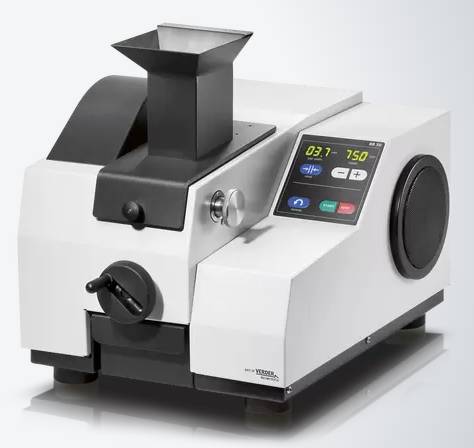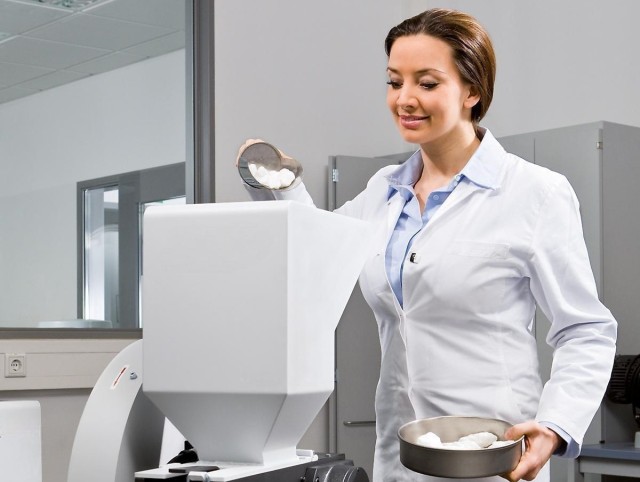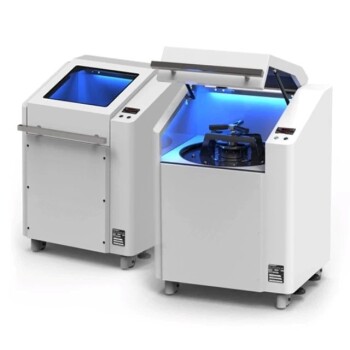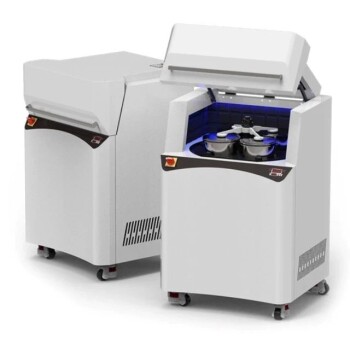Introduction to Laboratory Crushers
Laboratory crushers play a crucial role in scientific research and analysis. These crushers, commonly known as jaw crushers, are indispensable in obtaining accurate and consistent results for sample preparation. In this comprehensive guide, we will explore the uses and functionality of laboratory crushers. We will start by providing a general overview of laboratory crushers and their significance in scientific research and analysis. Understanding the mechanism of laboratory crushers is also essential, as it allows us to grasp how they work and achieve particle size reduction. Additionally, we will discuss the wide range of applications where laboratory crushers are used and the importance of choosing the right crushing equipment for maintaining sample integrity.

Understanding the Mechanism of Laboratory Crushers
Laboratory crushers, also known as jaw crushers, are essential equipment in any laboratory setting. They are used to reduce solid samples like rocks or crystals into powder or dust for various analytical or scientific purposes. Understanding the key mechanism of laboratory crushers is crucial for accurate and consistent results in sample preparation.
The Working Principle
The primary mechanism of conventional laboratory crushers is the jaw crusher. This machine consists of a fixed plate and a gyrating plate. The fixed plate serves as a stationary surface against which the sample is crushed, while the gyrating plate moves back and forth in a rocking motion, facilitating the crushing process.
The laboratory crusher is structured in a funnel shape, with a wider feed opening at the top and a narrow discharge aperture at the bottom. This design allows for efficient sample processing and collection. The sample is fed into the crusher through the wider opening, and as it moves downwards, it is progressively crushed by the gyrating plate. The crushed particles are then discharged through the narrow aperture at the bottom.
Importance of the Mechanism
The key mechanism of laboratory crushers is essential for accurate and consistent sample preparation. The rocking motion of the gyrating plate ensures that the sample is successively crushed towards the discharge point. This motion helps to achieve uniform and reliable particle size reduction, which is crucial for many analytical techniques and scientific studies.
Furthermore, the structure of the laboratory crusher, including the fixed and gyrating plates, plays an important role in the crushing process. The fixed plate provides a stable surface against which the sample is crushed, while the gyrating plate applies the necessary force to break down the sample into smaller particles. The motion involved in the crushing process ensures that all particles are subjected to the same level of force and size reduction, resulting in accurate and consistent results.
Advances in Laboratory Crusher Technology
In recent years, there have been significant advancements in laboratory crusher technology, leading to improved efficiency and sample processing capabilities. One such example is the KINTEK 50 crusher, which features a double-acting jaw crusher design. This design incorporates dual-acting top and bottom jaws that can hold a 10kg sample and crush a 70mm sample to 2mm in a single pass.
The KINTEK 50 crusher achieves its enhanced efficiency by gyrating both jaws simultaneously, resulting in a reduction of samples by 35 times their original size. This crusher also utilizes plates made of high chrome iron, which provides improved abrasion resistance and durability.
For larger sample sizes, the KINTEK 100 Crusher utilizes the same principle to process samples of up to 15kg, reducing samples of 110mm to 2mm in a single pass. These advancements in laboratory crusher technology allow for faster and more efficient sample processing, saving valuable time in the laboratory.
In addition to conventional jaw crushers, specialized hydraulic laboratory crushers are also available. These crushers are designed to trim excess material from samples and drill hollow cores into them before the crushing process begins. This additional step can help to further refine the sample and ensure accurate and consistent results.
Applications and Importance of Laboratory Crushers
Laboratory crushers are versatile and essential equipment used in various applications and processes in scientific research and analysis. These crushers are designed to crush and reduce the size of bulk materials, ensuring that they are suitable for further analysis. Choosing the right laboratory crusher is crucial for maintaining sample integrity and obtaining representative results.
Importance of Choosing the Right Crushing Equipment
The choice of the appropriate crushing equipment is essential to ensure that samples are prepared accurately and consistently. By using effective crushing techniques, researchers can obtain reliable results that are representative of the original material being studied. The use of improper crushing equipment can lead to sample contamination or alterations in the material's properties, resulting in inaccurate or misleading data.
Facilitates Easier Handling and Processing
Laboratory crushers play a pivotal role in sample preparation by reducing bulky materials into smaller particles. This reduction in size facilitates easier handling and processing of the samples. It allows researchers to manipulate the samples more effectively and perform various analyses or experiments on them.
Wide Range of Applications
Laboratory crushers find applications in various industries and research settings. Some common applications include:
-
Geology and Mining: Laboratory crushers are used to break down rocks and ores for geological analysis. They are essential in determining the composition and characteristics of geological samples.
-
Pharmaceutical and Chemical Research: These crushers are used in pharmaceutical and chemical laboratories to crush and process different types of compounds, medications, and chemicals. This enables researchers to study their properties and develop new formulations.
-
Environmental Analysis: Laboratory crushers are used to prepare environmental samples for analysis. They can crush soil, sediment, and other environmental materials, allowing researchers to study pollutants, contaminants, and their impact on the environment.
-
Material Science: Laboratory crushers are employed in material science laboratories to break down various materials for analysis. This includes polymers, ceramics, metals, and composites, among others.
-
Food Science: Crushers are used in food science laboratories to break down food samples for analysis. This includes crushing ingredients for nutritional analysis, sensory evaluation, and quality control.
Types of Laboratory Crushers
There are several types of laboratory crushers available, each designed for specific applications and sample types. The three main types are:
-
Jaw Crushers: Jaw crushers are commonly used for primary crushing. They are ideal for breaking down brittle objects into smaller pieces. Jaw crushers are versatile and can handle a wide range of materials, including glass, rock, building rubble, and various ores.
-
Cone Crushers: Cone crushers are used for secondary crushing and are well-suited for processing medium-hard to hard and abrasive materials. They are commonly used in mining and aggregate industries.
-
Impact Crushers: Impact crushers are designed for tertiary crushing and are suitable for processing a wide range of materials, including soft and non-abrasive ones. They are commonly used in recycling, mining, and quarrying applications.
In conclusion, laboratory crushers play a crucial role in sample preparation for scientific analysis. By employing the right crushing techniques and choosing the appropriate equipment, researchers can obtain accurate and consistent results. Laboratory crushers facilitate the handling and processing of bulky materials, allowing for easier manipulation and experimentation. It is important to choose the right laboratory crusher for specific applications to maintain sample integrity and obtain representative results.
XRF Sample Preparation and Laboratory Crushers

Laboratory crushers play a crucial role in XRF sample preparation, particularly in reducing solid samples to fine dust or powder. This process is essential for accurate molecular analysis using X-ray fluorescence spectroscopy (XRF). The significance of particle size reduction cannot be underestimated in achieving precise XRF analysis results.
Different Types of Crushing Equipment
There are three main types of crushers used in laboratory settings: primary, secondary, and tertiary crushers.
-
Primary crushers: Primary crushers are typically used for initial sample reduction. They are capable of handling large pieces of material and breaking them down into smaller, more manageable sizes.
-
Secondary crushers: Secondary crushers further reduce the sample size obtained from primary crushers. These crushers are often used to achieve a specific particle size range for subsequent analysis.
-
Tertiary crushers: Tertiary crushers are used when even finer particle sizes are required. They provide the final stage of reduction before the sample is ready for analysis.
Each type of crusher has its own specific applications and is chosen based on the desired particle size and characteristics of the sample being analyzed.
Importance of Particle Size Reduction
Particle size reduction is a critical step in XRF sample preparation as it directly affects the accuracy and consistency of the analysis. By reducing solid samples into smaller particles, laboratory crushers enable researchers to obtain representative samples that are easier to handle and process.
Accurate XRF analysis relies on achieving homogeneity within the sample. Through particle size reduction, the likelihood of obtaining representative subsamples increases significantly. This is particularly important when analyzing heterogeneous materials, such as ores or geological samples, where different regions may have varying compositions.
Additionally, reducing the particle size enhances the surface area contact between the sample and the XRF equipment, ensuring better detection and analysis of the target elements. This leads to more accurate quantification of elements and improved analytical sensitivity.
Sample Preparation Process
In XRF sample preparation, the sample undergoes a series of steps before it can be spectroscopically analyzed. The general process involves crushing the sample, drying it if necessary, grinding it to a specific particle size, and finally pressing it into a stable disc using pressing equipment.
1. Crushing
The initial step involves crushing the sample using laboratory crushers. This breaks down the solid material into smaller fragments, facilitating subsequent grinding and reducing the particle size.
2. Drying (if necessary)
Depending on the nature of the sample, it may be necessary to dry it before further processing. This ensures that the moisture content does not interfere with the grinding process or the accurate analysis of the sample.
3. Grinding
After crushing, the sample is processed further using grinding equipment to achieve a specific particle size suitable for XRF analysis. Vibratory grinders are commonly used for this purpose, ensuring consistent and uniform particle size reduction.
4. Pressing
The final step involves pressing the processed sample into a stable disc or pellet. This is typically done using pressing equipment that applies controlled pressure to compress the sample particles, ensuring cohesiveness and stability for analysis.
Conclusion
Laboratory crushers are essential tools in XRF sample preparation. Through their ability to reduce solid samples into fine dust or powder, they enable accurate molecular analysis using X-ray fluorescence spectroscopy. The appropriate choice of crushing equipment, along with careful attention to particle size reduction and sample homogeneity, guarantees precise and reliable XRF analysis results. By understanding the role and significance of laboratory crushers, researchers can optimize their sample preparation processes to obtain accurate and meaningful scientific data.
Environmental Studies and Laboratory Crushers
Laboratory crushers play a crucial role in environmental studies and research by providing researchers with a means to obtain accurate data about ecological areas with minimal invasiveness. These crushers enable researchers to process and analyze various materials to determine their properties, which are essential for wider environmental analysis. In this section, we will discuss the importance of laboratory crushers in environmental studies and how they facilitate the acquisition of material properties for comprehensive analysis.
Importance of Material Analysis in Environmental Studies
Understanding the properties of materials found in ecological areas is essential for assessing their impact on the environment. By analyzing the composition, particle size distribution, and other material properties, researchers can gain valuable insights into the environmental processes and dynamics. This information is crucial for making informed decisions and developing effective strategies for environmental conservation and management.
Role of Laboratory Crushers in Material Analysis
Laboratory crushers are specifically designed to reduce bulky materials into smaller particles, making them suitable for detailed material analysis. These crushers provide researchers with the means to obtain representative samples that accurately reflect the original materials being studied. By reducing the materials' size, crushers facilitate easier handling and processing, enabling researchers to conduct various tests and analyses.
Process of Material Analysis Using Laboratory Crushers
The process of material analysis using laboratory crushers involves several steps:
1. Sample Preparation: Before the materials can be analyzed, they need to be prepared by crushing them into smaller particles. Laboratory crushers are used to reduce the size of bulky materials, ensuring that the samples are representative of the original material.
2. Spectroscopic Analysis: Once the samples have been processed through a laboratory crusher and obtained in the desired particle size range, they can be spectroscopically analyzed. Spectroscopy is a widely used technique for determining various material properties, such as elemental composition, mineralogy, and organic content.
3. Data Interpretation: The data obtained from spectroscopic analysis is then interpreted to extract meaningful information about the material and its wider environmental context. This information helps researchers understand the composition, characteristics, and potential impacts of the materials on the environment.
Advantages of Laboratory Crushers in Environmental Studies
Laboratory crushers offer several advantages in environmental studies:
1. Non-Invasive Analysis: Laboratory crushers enable researchers to obtain accurate data about ecological areas with minimal invasiveness. By processing samples using crushers, researchers can extract valuable information without significantly disturbing the natural environment.
2. Representative Sampling: Laboratory crushers ensure that the obtained samples are representative of the original material being studied. This is crucial for obtaining accurate and reliable results that reflect the true characteristics of the ecological area.
3. Efficient Material Processing: By reducing the size of bulky materials, laboratory crushers facilitate easier handling and processing. This efficiency enables researchers to conduct various tests and analyses on the samples, thereby enhancing the quality and reliability of the obtained data.
Conclusion
In conclusion, laboratory crushers have a significant role to play in environmental studies and research. These crushers enable researchers to obtain accurate data about ecological areas with minimal invasiveness by processing materials into smaller particles. By analyzing the properties of these materials, researchers can gain valuable insights into the wider environmental context. Laboratory crushers are crucial components in environmental studies, providing researchers with the means to acquire material properties for comprehensive analysis.
Related Products
- Small Cryogenic Grinder Cryomill Cryogrinder with Liquid Nitrogen for Laboratory Use
- Laboratory Grinding Mill Mortar Grinder for Sample Preparation
- Laboratory Micro Tissue Grinding Mill Grinder
- Laboratory Hybrid Tissue Grinding Mill
- Laboratory Planetary Ball Mill Cabinet Planetary Ball Milling Machine









